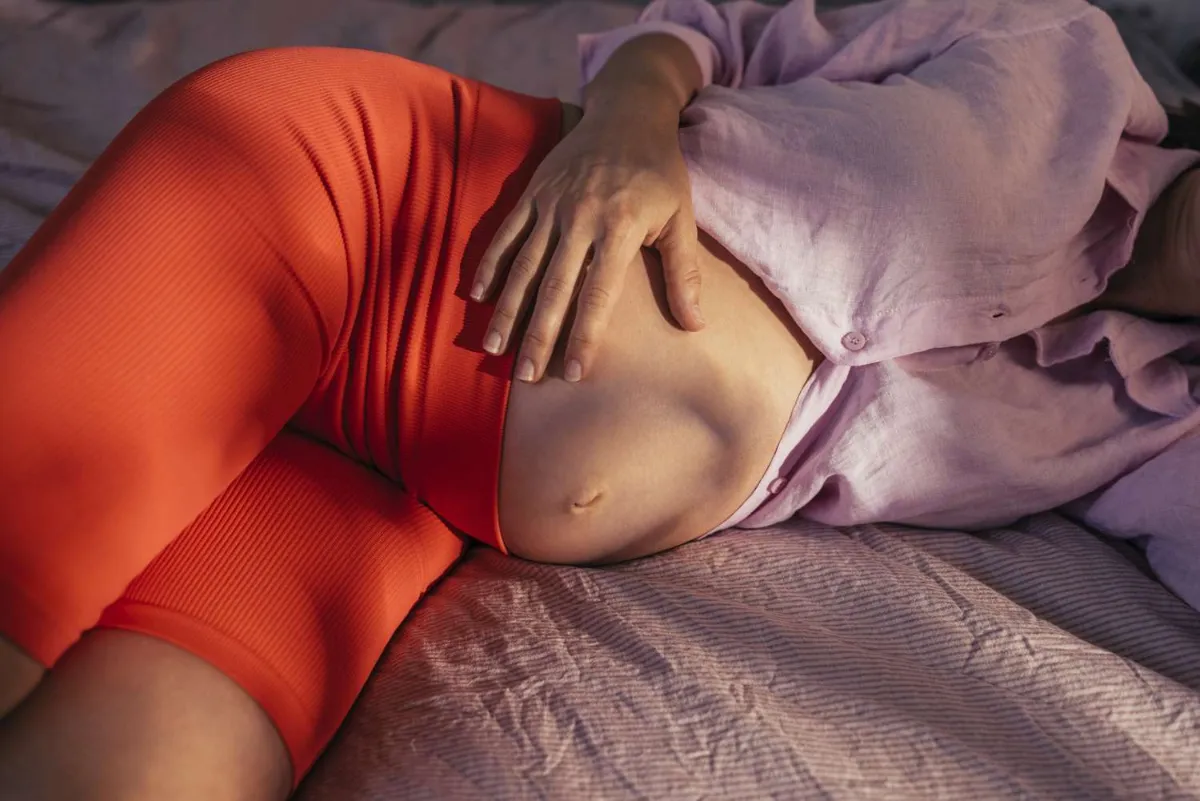Belly Button Changes During Pregnancy: What to Expect
The belly button, or navel, marks the spot where the umbilical cord was attached to the fetus, providing a vital link between mother and baby. The umbilical cord connects the fetus to the placenta, supplying oxygen and nutrients while removing waste. After birth, the umbilical cord is cut, leaving a small stump that eventually falls off, leaving the belly button behind.
While many of us don’t give much thought to our navels, pregnancy often brings changes to this area. Here’s an overview of what can happen to your belly button during pregnancy and what to expect.
What Happens to Your Belly Button During Pregnancy?
For most women, noticeable changes to the belly button begin in the second trimester, as the uterus grows to accommodate the developing baby. As the uterus expands, it pushes forward against the abdomen, which can cause the belly button to pop out. This is a normal and common change that often happens as the pregnancy progresses.
Is It a Bad Thing If My Belly Button Pops Out?
No, it’s perfectly normal and harmless for your belly button to pop out during pregnancy. This occurs as your growing uterus puts pressure on your abdomen, and the belly button’s position changes. While some women find the appearance of a “protruding” belly button unusual, it’s simply a sign of the changes happening in your body.
However, some women may experience irritation from their clothes rubbing against the popped-out belly button. If this is the case, you can use a belly button cover or supportive garment, such as a tummy sleeve, to protect it from irritation.
Is It Painful?
While most women do not experience pain in their belly button, some may feel discomfort or even mild pain in the area. The exact cause of this discomfort is not fully understood, but it is believed that the belly button is located in the thinnest part of the abdominal wall. As the abdomen stretches and the belly button protrudes, it can cause some pain or sensitivity.
If you experience pain, it is important to monitor the area and consult a healthcare provider if necessary. However, for most women, this pain is temporary and resolves after pregnancy.
Will My Belly Button Return to Normal?
For the majority of women, their belly button will return to a relatively normal position a few months after delivery. The abdominal wall gradually tightens and adjusts back to its pre-pregnancy state as the body heals from childbirth. However, the process may take time, and some women may notice slight changes to their belly button’s appearance, even after it settles back in.
Umbilical Hernia: What You Need to Know
Occasionally, a popped belly button can be a sign of an umbilical hernia. An umbilical hernia occurs when a small hole forms in the abdominal wall, allowing abdominal tissue — such as part of the small intestine — to push through. This can cause discomfort or a visible bulge near the belly button.
Symptoms of an Umbilical Hernia
Typical symptoms of an umbilical hernia include:
- A soft lump near the belly button that may become more noticeable when lying down
- A dull ache or discomfort in the area around the navel
- Increased pain when bending over, sneezing, or coughing
If you notice any of these symptoms, it’s important to consult with your doctor for evaluation.
Causes of Umbilical Hernia
Most umbilical hernias are congenital, meaning they were present at birth but may not have been noticed until pregnancy. As the uterus expands, the abdominal wall stretches, potentially revealing an existing hernia. However, an umbilical hernia can also develop during pregnancy due to the additional pressure placed on the abdominal wall.
Umbilical Hernia Treatment
In many cases, an umbilical hernia does not require immediate treatment, especially if it is not causing pain or discomfort. Some women find that gently massaging the area can help reduce the bulge, while others choose to wear a belly band for added support and to prevent further bulging.
In most cases, the hernia will recede or improve after pregnancy as the body returns to its pre-pregnancy state. Your doctor may recommend specific exercises to help strengthen the abdominal muscles and reduce the hernia’s appearance.
In rare cases, surgery may be required, especially if the hernia causes significant discomfort or complications. However, surgery is typically avoided during pregnancy unless absolutely necessary.
Myth About Pregnant Belly Buttons
There is a common myth that pregnant women’s belly buttons are connected to their uterus, placenta, or the baby’s belly button. In reality, the belly button in adults is not connected to anything in the abdomen once the umbilical cord is cut after birth. This misconception may arise due to the role the belly button played during pregnancy, but it is purely a scar from the umbilical cord’s attachment.
Conclusion
Changes to the belly button during pregnancy are a normal part of the process as the body adapts to support a growing baby. For most women, a popped belly button is harmless and temporary. However, if you experience pain or discomfort, or if your belly button bulges in a way that seems unusual, it’s always a good idea to speak with your healthcare provider to rule out any underlying issues, such as an umbilical hernia. With the right care and attention, your belly button should return to a more familiar state after pregnancy.
This version provides a detailed yet concise overview of the changes that happen to the belly button during pregnancy, including potential issues like umbilical hernias and myths associated with belly button changes.

